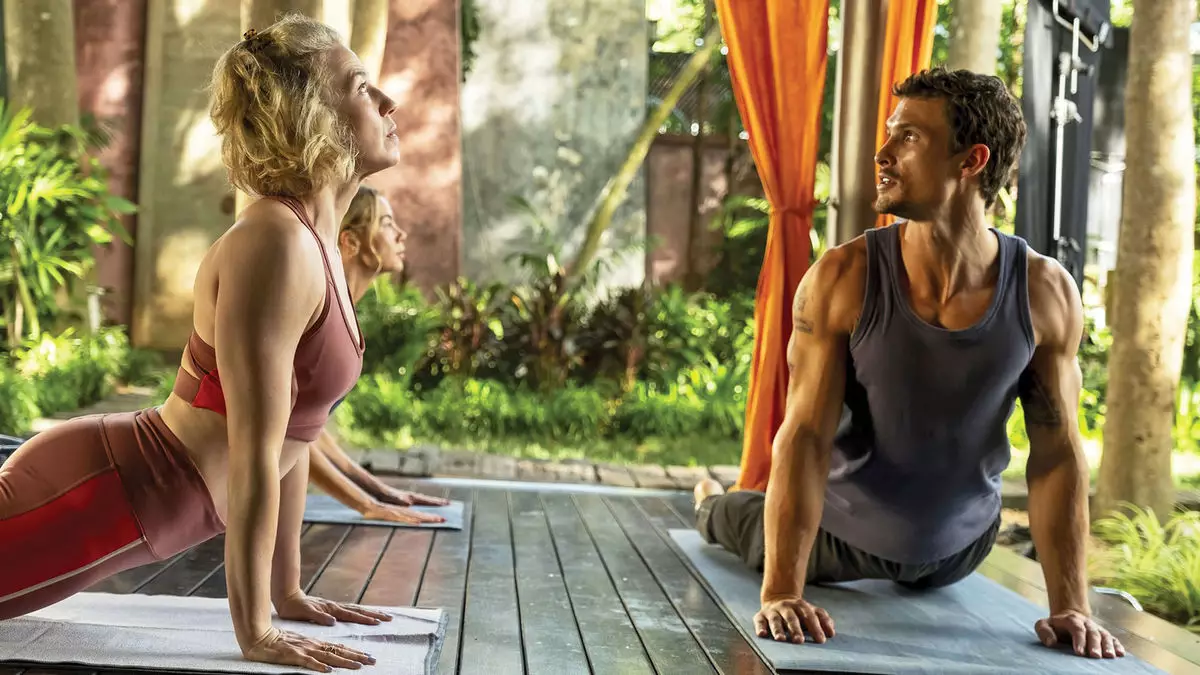The HBO series “The White Lotus” continues to grasp the audience’s imagination, intertwining mystery, family dynamics, and now, an opulent embrace of luxury wellness. In its third season, viewers are whisked away to an extravagant resort in Thailand that epitomizes modern wellness culture—where “health mentors” cater to the whims of entitled guests. The narrative dives beyond typical vacation stereotypes, spotlighting the burgeoning trends that are shaping the wellness industry today. The remarkable thing about this season is how it elevates an existing discourse on wellness into a realm that feels both fantastical and grounded in reality.
Renowned properties like The Four Seasons or Anantara serve as the backdrop, but it’s the meticulous crafting of the experience that demands scrutiny. The resort’s no-phone policy, for instance, mirrors burgeoning wellness trends that prioritize disconnection from digital distractions. This dramatic pivot to a tech-free experience is particularly resonant, reflecting a cultural shift towards “analog wellness.” Guests are encouraged to set aside their devices, a theme that permeates not just this fictional retreat, but also real-life establishments opting for similar practices. According to the Global Wellness Summit’s insights, this trend aims to reconnect individuals with themselves, fostering a sense of peace that is often overshadowed by our hyper-connected lives.
The Dynamics of Family Wellness
One cannot overlook the portrayal of the Ratliff family, whose interpersonal conflicts provide a rich canvas for exploring the multifaceted nature of family wellness. Each generation grapples with distinct mental health pressures, and this season highlights the increasing acknowledgment of teen wellness—a segment often overlooked in traditional wellness narratives. The show captures the awkwardness and strife amongst siblings, showcasing that even an ultra-luxurious setting cannot mend deep-seated emotional rifts.
The introduction of family-centric wellness programming, as showcased in establishments like Zulal Wellness Resort in Qatar, emphasizes a shifting paradigm in how wellness is presented. Instead of being an exclusive experience meant only for adults, wellness is becoming inclusive, targeting families looking to recharge together. Through the Ratliffs’ experiences, we see a reflection of real-life families seeking solutions to foster strength and unity while tackling their individual mental health challenges.
Skepticism in the Face of Fads
Another intriguing aspect of the season is its treatment of biomarker testing, which raises pertinent questions about the wellness industry’s commercial viability. Although the show presents biomarker testing as a somewhat comedic element—juxtaposed against its extravagant setting—it also sheds light on the allure of such practices for many wellness enthusiasts. The skepticism cast on the reliability of these tests can resonate with viewers, underscoring an uncomfortable truth: not everything marketed as health-promoting is necessarily sound or scientifically backed.
“How the [electric] current is conducted tells us a lot about what’s going on in your body,” states one character, reflecting the almost mystic faith some individuals place in technology. This element serves as a critique of the wellness industry, illustrating that while many are eagerly chasing after the latest health fads, there is no universal magic bullet—part of the ethos that “The White Lotus” expertly critiques.
The Convergence of Luxury and Authenticity
What we see in this season is a commentary on excess. The juxtaposition of splendid resort settings with the characters’ inner turmoil serves as powerful storytelling. While each character indulges in the pinnacle of luxury offerings, they are simultaneously confronted with their vulnerabilities—showing that personal wellness is not solely dictated by lavish treatments or serene environments.
Luxury wellness in “The White Lotus” goes beyond mere extravagance; it offers a lens through which contemporary society’s obsession with health and wellness can be both celebrated and criticized. By representing the quest for wellness, combined with the often comical complexities of human relationships, the series becomes a reflective surface for its audience to examine their choices, desires, and needs in an age where wellness often comes shrouded in luxury and overindulgence. Each episode acts as a mirror, challenging viewers to explore the landscape of their own wellness journey while navigating the inherent human conflicts that arise along the way.


Leave a Reply